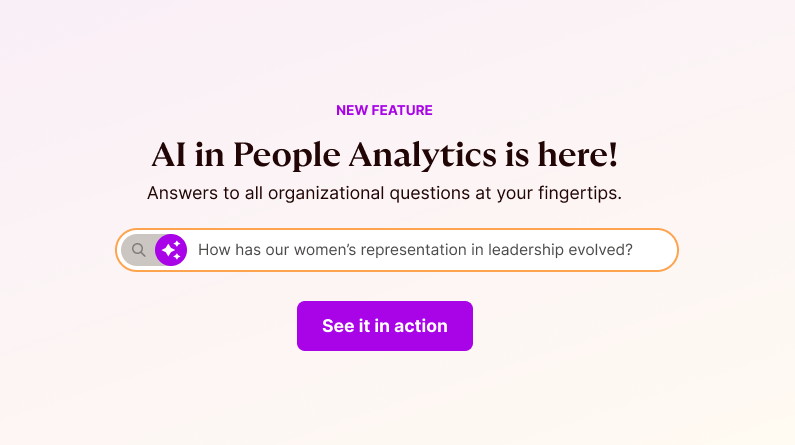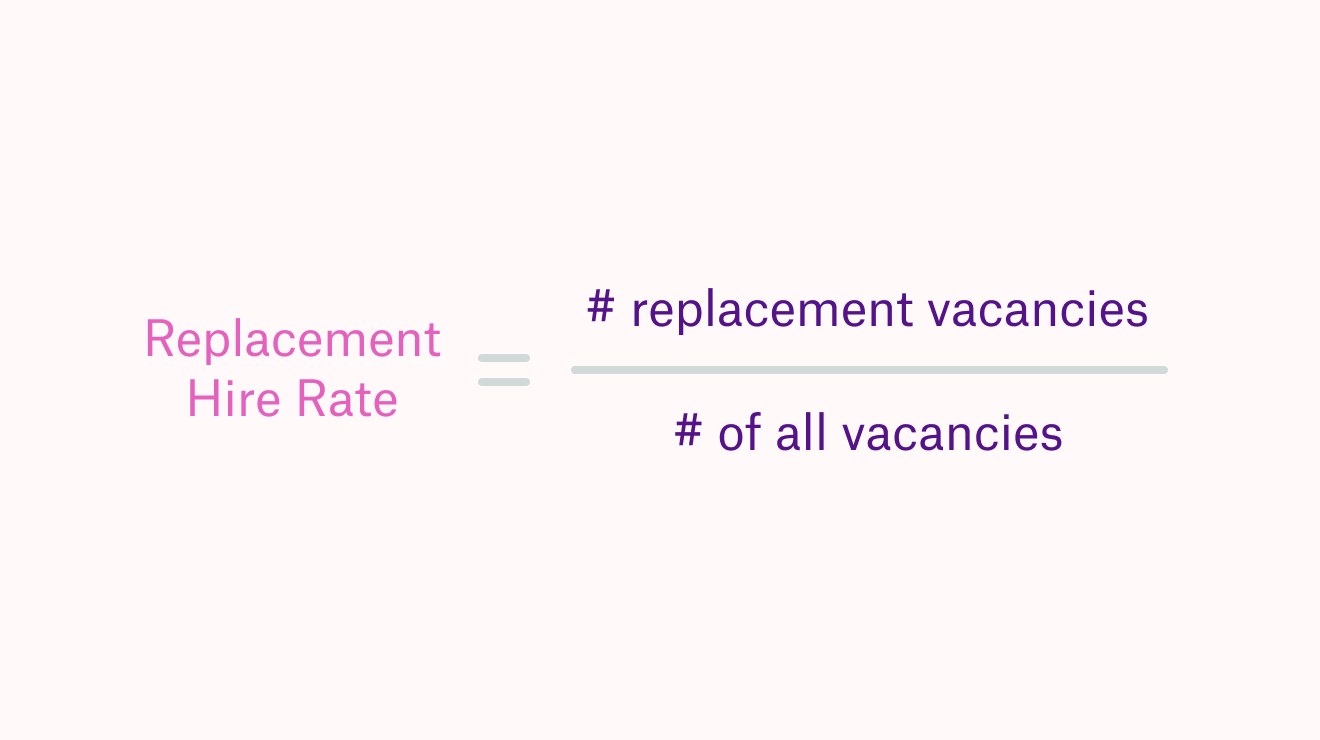The Great Resignation is costing you more than you think.
Offices are opening, bosses are calling, and… some employees are not coming back.
The ‘Great Resignation‘, the recent wave of employees quitting their jobs as we return to workplaces, has some companies scrambling to replace newly empty roles.
We’ve already covered the way to find out if you’re losing your top talent and how to make sense of the reasons your employees are leaving. Now, you have an empty role that needs filling. However, finding a replacement is the first step in a longer process of getting your new hire up to speed.
I’m sure your former employee was irreplaceable in some ways. But as Beyoncé says, we can’t cry over what could have been. Now let’s look ahead to all the ways we need to invest in new employees who have big shoes to fill.

How do I calculate the time it takes to hire and onboard replacements?
Here, we’re actually talking about the time and the cost associated with recruiting, hiring, and onboarding for replacement positions.
To start, we need all the original data from our people and financial systems in one place.
Here’s what you need to track in your talent acquisition system:
- Positions to fill that are replacements vs new roles
- The date of application and offer signing for all candidates
- Number and duration of interviews
Here’s what you need to track in your HR information system:
- Start dates for replacements and new roles
- End dates for leaving team members
Here’s what you need to track in your learning management system:
- Training courses (available and completed) per new employee
- Number and duration of training courses
Here’s what you need to track in your financial management system:
- Money spent on internal and external recruiting
- Money spent on talent acquisition platforms
- Money spent on job postings
- Money spent on training programs and tools for learning
- Money spent on temporary hires for each role
- Money spent on interim consulting or freelancers for each role
These four systems need to talk to each other for us to get the full cost of replacement. One way to combine these is with our Orgnostic platform. If you’re using Lever for talent acquisition, our new integration will help you bring all your recruitment and hiring metrics together with the other three systems, to start calculating the true cost of replacing employees who’ve left.
After integrating your people and financial data from these sources, we’re separating new roles from replacement roles by switching the “Replacement Hires” filter on for all our metrics. Then we use the information above to get these metrics for time and cost:
- The cost of replacement: the sum of all direct and indirect costs relating to hiring, training, and productivity for replacement hires
- The hire rate (for replacement hires): the percentage of your hiring efforts that come from employee turnover
- The time to hire (for replacement hires): the length of time from when your chosen candidate applies to when they sign the offer
- And the time to productivity (for replacement hires): how long it takes a new hire to perform at the expectation level for that role
First, let’s see how to calculate the time factor.
- Total Time to Replace = Time to Hire + Time from Offer to Start Date + Time to Productivity (# of days from first day on the job to when the manager says, “yes, this employee meets expectations” in their managerial onboarding survey)
- Time to Hire = # of days from candidate application to signed offer
- Time from Offer to Start Date = # of days from signed offer to first day on the job
- Time to Productivity = # of days from first day on the job to when the manager says, “yes, this employee meets expectations” in their onboarding survey
Now, let’s pull together a full accounting of our cost elements.
- Recruitment Costs = Direct costs (sum of money spent on external recruiters, internal recruiters, job postings/ads, and total software/tool costs per vacancy) + Indirect costs (sum of money spent on interviewing = total opportunity cost of time spent)
- Training and Onboarding Costs = Direct costs (sum of money spent on training programs, tools, and online courses) + Indirect costs (hours spent per person spent on meetings and training with managers and teammates * opportunity cost per hour, per person)
- Performance Costs = Direct costs (sum of money spent on interim freelancer or agency replacement) + Indirect costs (total productivity lost = full productivity – productivity level of the replacement before meeting expectations)
To find these recruitment and training costs, you may need to consider the replacement hire rate.
This reflects the percentage of all your open positions that are for replacing former employees. If some costs have a single value for all your hiring or are expressed per vacancy, you can multiply those costs by the replacement hire rate to break down the costs by replacement and new vacancies.

So what?
Congratulations!
Now you know how much time it really takes and how much it really costs to replace each employee who has resigned.
The dollars really add up, don’t they?
Preventing your awesome employees from leaving would make the biggest impact, so we should start there. Prevention will reduce the costs above much more efficiently than tweaking your recruitment spend per position, because we could avoid 100% of the costs by preventing turnover and only a fraction of these costs once employees have already left.
When used at the right time, our surveys can help you see where to improve your workplace to increase retention.
Here are some ways to use our diagnostic and exit surveys:
- Our Culture survey helps answer questions like “Are our employees aligned and empowered?” and link that to company success metrics and retention
- Our Team Effectiveness survey answers questions like “What are your team’s greatest strengths?” based on six conditions of successful teams to see how team interactions can be helping or hurting turnover metrics
- Our Employee Wellbeing survey covers burnout and engagement, critical elements of employees’ work experience, to address issues like “Do your employees feel safe expressing their opinions and attitudes?” and “What’s the impact of burnout symptoms on performance?”
- Our Talent Management survey, based on the Leadership Capital Index, focuses on how well your employee systems are working. From these answers, you can see how compensation, performance management, and information sharing systems help or hurt employee productivity
- Finally, you can get insights from our Exit Survey and screen for answers from “voluntary leavers” and “high performers” to see why those employees in particular chose to leave
If you’re in the middle of a “Great Resignation” right now, there are a few ways you could reduce these costs:
- Speed up the time to hire (and reduce direct and indirect hiring costs) by making more attractive offers so you can get a higher offer acceptance rate
- Drop the recruitment sources that aren’t performing and focus on more cost-effective places (for example, consider how employee referrals compare)
- Streamline your hiring stages to reduce repetitive and unnecessary interview rounds (see how Google saved time and money on their interviewing here)
Clearly, sometimes the added time and cost of replacing folks is worth it.
Maybe your hiring process didn’t work out so well recently and you found yourself with a bad hire. It could help everyone in that team, including the person who isn’t a good fit with the role, if you found someone else to take over the position.
Or maybe someone you hired a while ago has recently become a low performer. While it’s tempting to avoid situations like these, the best approach for everyone is a swift, fair, and transparent one.
In either scenario, investing in finding and training the best replacement you can will bring back dividends.


From the Talent Management series: